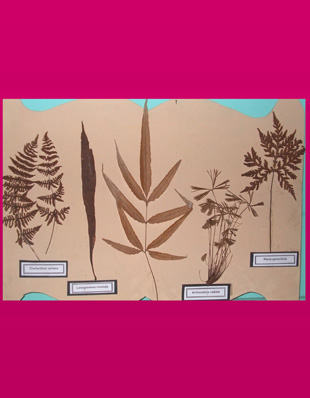
Pteridophytes
Pteridophytes are the first land plants and are called 'Vascular Cryptogams’, because they have the vascular tissue namely the xylem and phloem. They are the highly advanced group among cryptogams and they include both living and fossil plants. The carboniferous period was called the 'Age of the Ferns'.
The plants are generally Sporophyte and is differentiated into root, stem, and leaves-that is called "Cormophyte". Branching may be dichotomous (or) monopodial; the leaves are of two types, one is microphyllus (ex: Lycopodium) and another is megaphyllus (fern leaf) and when the leaves are young, they exhibit circinate venation. The function of the leaf is photosynthesis but in fern like Nephrolopis the leaves are both photosynthetic and reproductive; in the mature stage they bear the structure called 'Sori'. The plant is attached to the substratum by means of roots.
Presence of stele in the root and stem of pteridophytes have the vascular tissue, the xylem, phloem and pith are called 'stele'. The stele types varies from Protostele to a Dictyostele. Secondary thickening was commonly seen among fossil plants. In the present day pteridophytic plants only two plants alone show a kind of secondary thickening - Isoetes and Botrychium.
Pteridophytes are classified into two types by the spores; some are Homosporous (ex: lycopodium;). They produce only one type of spores, the other one is heterosporous (ex: selaginella). They produce two different kinds of spores, the smaller one is micro spore and the larger one is megaspore.
The ferns exhibit alternation of generation with separate multi-cellular spore-forming (sporophyte) and gamete forming (gametophytes) stages in their life cycle. Various living and fossil ferns are exhibited in the Systematic Botany Gallery.


